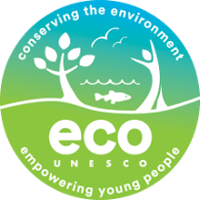The second stage of the Young Environmentalist Awards Programme is underway and it is time for young people who registered for Ireland’s biggest green awards scheme to submit their eco-action project.
The project submission deadline is 1 March 2019. After that, the ECO-UNESCO internal judging panel will assess all submitted projects and shortlist the candidates who will pitch their ideas in front of a panel of expert external judges.
Below, you will be able to find some useful information on how to carry out your environmental action project.
Step 1. Put a Team Together
The first step to realise your project is putting a team together. What would an ideal team look like? A YEA team should have between 2 and 25 members, who share the same environmental concerns and want to take action to make a real change.
Your team will be made up of people with different backgrounds and skills. Discussing each team member’s interests and skills is a great way to get to know each other and be able to assign members the role that best matches individual skills, which, in turn, will be an asset for developing the project.
Step 2. Select an Environmental Issue
Once the team is formed, it is time to move to the second step, namely selecting the environmental issue you would like to work on. It is important to remember that your submission should be an action project, and so you not only need to research a topic and present your findings, but you will also have to set specific goals and take action! You can find the YEA award categories here.
In order to set real goals, since environemntal issues are very broad, it would be helpful to first select an environmental topic you care about and then think about your personal experience to be able to identify a particular aspect of this environmental topic to be the focus of your project. If you have troubles focusing on a specific part of the topic you want your project to be about, try to think of how a global environmental problem is affecting your local community, or vice versa; explore how a local environmental issue connects with a given sustainable development goal; look for real stories related to the environment and sustainability for inspiration.
Step 3. Research
Research will be an important part of putting a project together, to allow the team to understand the causes and impacts of the issue, but also to see what has already been done about it and what resources you might have available, to finally be able to come up with a creative approach to it. Don’t forget to check out the website of environemntal groups and organisations, which usually have an educational resources pages that could contain useful information for you.

Step 4. Create an Action Plan
Once you have a team and a topic, it is time to set an action plan, to help you organise your ideas. When developing your plan, keep in mind the following questions:
- What is your project about and what goals you want achieve?;
- Who is your target audience?;
- What actions are you going to take?;
- Who will be in charge of the different tasks and how long will it take to complete them?; and
- What resources do you need?
What makes a good action plan is setting a few (1 to 3) realistic and specific goals that are achievable considering the time and resources you have available, that can be of interest of a broad audience and that represent a creative approach to an issue.
Step 5. Take Action!
Like stated above, taking action is an essential part of the Young Environmentalist Awards Programme, not only to demonstrate what you have learnt, but also to be empowered and inspire others to take action in the future. If you are unsure of what ‘taking action’ means, these are some ideas: join an existing campaign or create a new one; conduct a survey; create a petition; create a website, a blog, a video, an article; hold a workshop or an event, or simply create educational materials; lobby; organise a challenge, a school fair or a fundraising event; and so on.
There are several kinds of actions, big or small, that can be taken, and you can choose to focus on one of them or mix them together, depending on your team timeline, budget and interests.

Step 6. Raise Awareness
Another important step to carry out your eco-action project is awareness-raising. To inform and educate people about your topic and influence them to positively change their behaviours, you will need to understand your audience, give them clear information and inspire them to act.
A succesful awareness raising campaign will try to leverage on people emotions and involve them in the causes and consequences of the topic you are working on. Secondly, you will need to deliver a message of hope, and make them understand that change is possible. Finally, you need to call for action. To start, you can communicate your message to your community, including, family, friends, school and neighbours. Then you can contact local businesses, newspapers and environmental groups.
Step 7. Reflect
Finally, you will need to reflect on your project, to determine whether you were able to reach the goals you set for the team, what lessons you learnt, what could have been done differently, and how you could keep developing your project in the future.
An important thing to remember is that it is crucial to keep a record of all the work carried out by the team, from how you put your team together to the final reflections, in order to be able to present it in your portfolio by 22nd February.
For more information and useful resources on how to put together your environmental project, you can consult our Programme Manual.


